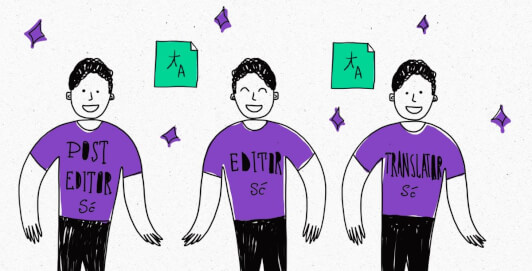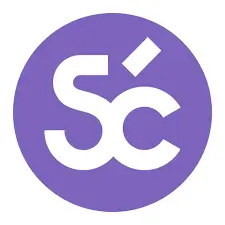Translation management systems (TMSs) are systems designed to support complex or large-scale translation and localization tasks. They help manage the translation workflow and streamline the tasks exchange between all the participants of localization process, as well as integrate with content management systems, machine translation engines, and other tools to streamline the whole process.
What are the benefits of using a TMS?
There are many potential benefits to using a TMS, including:
Increased efficiency and productivity in managing translation projects
Improved quality control through features such as built-in glossaries and terminology management tools
Reduced costs by automating repetitive tasks and simplifying the tracking of project spending
Enabling collaboration with multiple translators or language service providers (LSPs)
What are the key features of a TMS?
The key features of a TMS will vary depending on the specific needs of the user, but will most often include the following:
Workflow and project management
Translation management systems allow users to keep track of their projects, including deadlines, statuses, progress, collaborators, and so on. Unlike generic project management software or Excel spreadsheets, TMSs are purpose-built for translation and localization projects, providing users with everything they need to efficiently handle their translation projects.
Smartcat is one such TMS.
Workflows you create can be simple, with just one translator working on a single document, or complex, with several translators working on many documents in different languages. There can also be additional roles such as editors and proofreaders down the line to ensure quality.
Because localization teams often do more than just translation, some TMSs, including Smartcat, allow users to store and manage other types of projects, like desktop publishing, interpreting, copywriting, and other related jobs.
Machine translation (MT) integration
Many TMSs now offer some form of machine translation (MT) integration to help speed up the translation process, especially when it comes to large projects. This could be a built-in MT engine or the ability to connect to a third-party service like Google Translate.
In Smartcat, users have several MT engines to choose from and can configure them to suit their specific needs.
Combined with workflow management features, MT integration allows users to configure hybrid translation processes that make use of both human and machine translation.
Translation memory (TM) and glossary management
Most TMSs support translation memories (TM), which are databases that store past translations and make it easier to translate similar content in the future. This not only saves time but also helps ensure consistency across multiple projects.
Some TMSs also include glossaries and terminology management tools to keep the use of industry-specific terms consistent. In Smartcat, for example, users can create and manage their own glossaries or import existing ones from Excel.
As a user works on a translation in the Editor, any glossary terms that come up will be highlighted so they can easily be seen and inserted into the text if necessary.
Vendor management and assignments
Another key feature of a TMS is the ability to manage vendors, including language service providers (LSPs), independent translators, and other suppliers. This might include keeping a database of approved vendors, issuing purchase orders and invoices, and tracking payments.
In Smartcat, users can view and even edit (upon agreement) the vendor profiles for the LSPs or translators they work with:
This allows them to keep their own personalized profiles for each supplier, and easily keep track of contact information, rates, areas of expertise, and other important details. And because all projects are stored in the same system, it’s easy to see who has done what, which is very useful when deciding who to work with on future projects.
Assigning projects to vendors is also an important feature. In Smartcat, users can either assign projects manually to specific vendors or set up automated assignment rules based on factors like language pair, domain, and so on.
You can also create assignment templates for multi-language projects, which can be applied with just a few clicks:
When vendor management is integrated with a built-in invoicing/payment system, it can also be used to automatically generate invoices and make payments to vendors. This way, the entire process can be automated — from project assignment to invoice payment, saving you hours of work and hundreds of dollars in processing fees.
Analytics and reporting
Some TMSs also come with analytics and reporting, which can be useful for aspects like project cost estimation, quality assurance, and finding ways to optimize the translation process. In Smartcat, for example, users can generate reports on project progress, vendor performance, and more.
Having this data in one central location can help users make more informed decisions about their translation processes and workflows.
Integrations & API
Last but not least, a good TMS will offer a variety of integrations to connect it to other systems, like content management systems (CMSs), source code repositories, customer relationship management (CRM) systems, e-commerce platforms, among others.
Integrations allow users to automatically pull content from their CMS into Smartcat. Once translated, the content is pushed back into the CMS. All of this can be done without leaving the interface and, in some cases, without any manual intervention at all (aka continuous localization).
In addition to integrations, some TMSs also have an application programming interface (API), which allows developers to build custom integrations or connect the TMS to any other system that it doesn’t support out of the box.
How do I choose a TMS?
There are many factors to consider when looking for a TMS, including cost, features, ease of use, and connectivity. The best way to find the right TMS for your needs is to think about your specific requirements and then compare how different options cover these needs in terms of features and pricing.
Here’s a quick TMS checklist:
Cost: What’s the price tag? Is it a one-time fee or a subscription? Are there additional costs for things like support, training, or integrations?
Features: Does the TMS have all the features you need? What features are most important to you?
Ease of use: How easy is the TMS to use? Is it intuitive and user-friendly? Do you need training to use it effectively?
Integrations: Does the TMS integrate with other systems you use (like your CMS)? If not, are there any APIs that will let you build custom integrations?
Customer support: What kind of customer support does the TMS offer? Is it 24/7? Live? Do they have a knowledge base or other helpful resources?
Although we’re obviously biased, we believe Smartcat has everything you need in a TMS. It’s a cloud-based TMS that covers the entire translation workflow, from receiving orders to making payments. It’s a comprehensive platform where you can manage all your translation projects — no need to juggle multiple tools or services.
If you’re interested in learning more about Smartcat or trying it out, sign up for a free account here.


